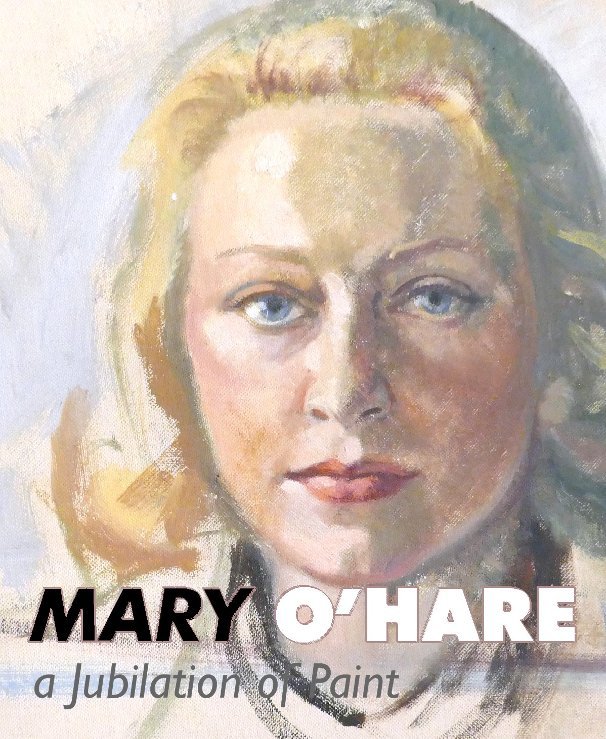Mary O'Hare the Artist
A Jubilation of Paint
by Sandy Kinnee
This is the price your customers see. Edit list price
About the Book
An Introduction to the Paintings of Mary O’Hare and the Expectations of a Woman Artist in the 1940s
What I write here is not art history. I am not an art historian. It concerns Art for Art’s sake and a particular woman making art for a living. This is a tale of making Art without a safety net, far outside the commercial gallery world, beyond the sight of museum curators. This is about living to paint and not relying on a network of any kind.
In the 1940s there were other women who had gone to art school and were crazy talented. The routine was to be a talented woman and marry a man who valued your talent sufficiently to let you keep doing your artwork. Mary saw that as an illusion masking a trap. She met others in art school who, even if they married another artist, would end up changing diapers, scrubbing floors, doing marketing, and balancing a budget. No man would ever say to her, “Don’t forget to pay the bills on time”.
No man would ask her what is for dinner or are my pants pressed? She was not necessarily aware of Lee Krasner’s or Elaine de Kooning’s situations, but she knew other women from the art schools she attended in Cleveland, Cranbrook, Chicago, and Cape Cod who were spending more time being Suzy Homemaker than putting paint on paper. She elected to stay single.
Mary was born in Canada in 1923, as was Miriam Schapiro. Both were pioneers, of a sort, with paint. Schapiro took a different path, O'Hare made her own way.
What I write here is not art history. I am not an art historian. It concerns Art for Art’s sake and a particular woman making art for a living. This is a tale of making Art without a safety net, far outside the commercial gallery world, beyond the sight of museum curators. This is about living to paint and not relying on a network of any kind.
In the 1940s there were other women who had gone to art school and were crazy talented. The routine was to be a talented woman and marry a man who valued your talent sufficiently to let you keep doing your artwork. Mary saw that as an illusion masking a trap. She met others in art school who, even if they married another artist, would end up changing diapers, scrubbing floors, doing marketing, and balancing a budget. No man would ever say to her, “Don’t forget to pay the bills on time”.
No man would ask her what is for dinner or are my pants pressed? She was not necessarily aware of Lee Krasner’s or Elaine de Kooning’s situations, but she knew other women from the art schools she attended in Cleveland, Cranbrook, Chicago, and Cape Cod who were spending more time being Suzy Homemaker than putting paint on paper. She elected to stay single.
Mary was born in Canada in 1923, as was Miriam Schapiro. Both were pioneers, of a sort, with paint. Schapiro took a different path, O'Hare made her own way.
Author website
Features & Details
- Primary Category: Fine Art
- Additional Categories Biographies & Memoirs
-
Project Option: Standard Portrait, 7.75×9.75 in, 20×25 cm
# of Pages: 126 -
Isbn
- Hardcover, ImageWrap: 9798881233655
- Softcover: 9798881233686
- Publish Date: Mar 08, 2024
- Language English
- Keywords Cranbrook, 1950, 1940, portraits, woman artist
See More
About the Creator
Sandy Kinnee
Paris, France / Colorado Springs, CO
Sandy Kinnee is best known for his work on shaped, handmade paper. His work is in the collection of the Metropolitan Museum, Brooklyn Art Museum, Princeton University Art Museum, Portland Art Museum, Museum of New Mexico, Phoenix Art Museum, University of Michigan Art Museum, New Britain Museum of American Art, Madison Museum of Contemporary Art and many private and public collections. Part of each year he spends in France, where he writes and takes photographs. This series of books assembles the poems, short stories and photography into the themes that have gained critical mass over the years.


